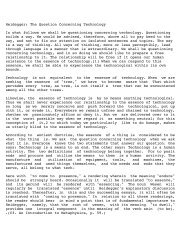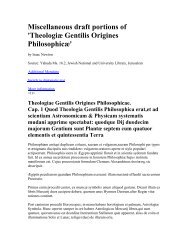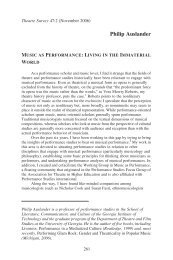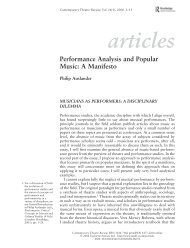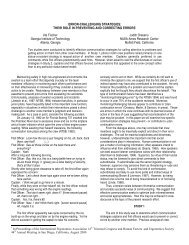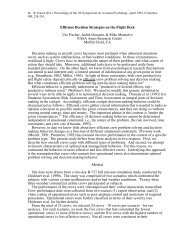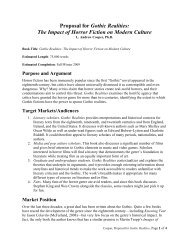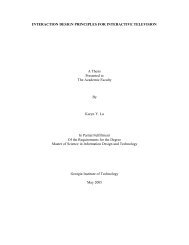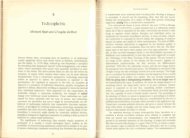william t. costello, sj - The School of Literature, Communication, and ...
william t. costello, sj - The School of Literature, Communication, and ...
william t. costello, sj - The School of Literature, Communication, and ...
Create successful ePaper yourself
Turn your PDF publications into a flip-book with our unique Google optimized e-Paper software.
THE FRAMEWORK OF SCHOLASTICISM<br />
with Aristotelian physics <strong>and</strong>, where necessary, with theology, the<br />
scholastics tragically entangled themselves in splicing wires <strong>and</strong><br />
complicating circuits within the building. As a consequence, the<br />
seventeenth-century mind was heir to a system so oversystematized<br />
that its only escape was either to attempt a new synthesis by in-<br />
corporating the new discoveries, to give up the struggle, or to<br />
branch <strong>of</strong>f in a new direction. Some, like Suarez, did attempt re-<br />
statement, but the result was only further bickering <strong>and</strong> confounded<br />
confusion. Others simply gave up <strong>and</strong> allowed scholas-<br />
ticism to become an empty form. A few branched out in new di-<br />
rections <strong>and</strong> found themselves in the modern world.<br />
Before considering the doctrinal content <strong>of</strong> the scholastic system,<br />
we must look at the mechanical, formal part. Scholasticism<br />
cannot, <strong>of</strong> course, be understood without knowledge <strong>of</strong> its teach-<br />
ing, but it is the methodology, the external forms <strong>and</strong> practices<br />
which prima facie identify it.<br />
THE LECTURE<br />
<strong>The</strong> dialectical origins <strong>of</strong> scholasticism, the necessity <strong>of</strong> organizing<br />
the Aristotelian canon into manageable sections, <strong>and</strong> the aim<br />
*<br />
<strong>of</strong> "cohesive systematizing' dictated the external forms <strong>of</strong> the<br />
scholastic method. <strong>The</strong> three chief scholastic exercises were lec-<br />
<strong>and</strong> declamations. *<br />
tures, disputations,<br />
Various scholastics had formed their lectures according to various<br />
moulds. Whereas Peter Lombard had used "books/' "sen-<br />
tences," <strong>and</strong> "distinctions"; Aquinas "parts," "questions," "articles";<br />
Scotus "parts," "distinctions," <strong>and</strong> "questions," all broke<br />
their treatises down to some final unit upon a specific phase <strong>of</strong><br />
the subject. Aquinas, for example, begins Pars Prima <strong>of</strong> his<br />
Summa <strong>The</strong>ologica with "Question One. On the Science <strong>of</strong> <strong>The</strong>-<br />
ology Itself." This question is divided into ten lectures, called<br />
articles, on such subjects as: "Article One. Whether in addition<br />
to the other sciences theological doctrine be necessary? Article<br />
Two. Whether it is a science? Article Three. Whether it is one<br />
science or many?"<br />
<strong>The</strong> casting <strong>of</strong> the proposition into question form was not mere<br />
posing; the dialectician is always attacking a problem. Further,<br />
the dem<strong>and</strong>s <strong>of</strong> logic <strong>and</strong> the need <strong>of</strong> giving the student, who<br />
must get it all hy ear, a retainable unit, requires subdividing on<br />
the part <strong>of</strong> the lecturer. Finally, the act <strong>of</strong> subdividing implies<br />
the showing <strong>of</strong> relationships, or <strong>of</strong> systematizing. Thus, the very<br />
shape <strong>of</strong> the lectures grows out <strong>of</strong> the scholastic temper.<br />
H



